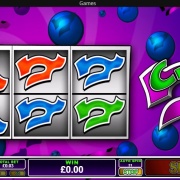So, why not make your life a little bit easier? It can be employed for general painting and texturing, texturing of flat stone surfaces and even skin deformities. Use it as a stamp, preferably on a multiply layer mode. This brush can’t be used to create a realistic rock from beginning to end, but it is extremely useful for creating a basic texture or for hinting at the detail during speed painting. Once the texture is done, duplicate the layer with it, flipping it horizontally and setting its layer mode to Soft Light. Just run over the night sky with this brush, first with a larger size and higher transparency (for distant stars) gradually blurring and changing to smaller and more opaque. Use this brush as a typical hard round, constantly playing with the opacity and colour. Photoshop:
Opacity: 5-50%
Flow: 100%
Painter:
Unavailable
07. Photoshop:
Opacity: 5-30%
Flow: 100%
Spacing: 25%
Painter:
Large Chalk
Opacity: 50%
Grain: 25%
Resat: 18%
Bleed: 0%
Jitter: 4
04. This brush is one of the most functional, as aside from its main purpose, it can be used to create such textures as: skin pores, brocade, smaller leaves, dust, enhanced grass and so on. She’s currently a freelance illustrator. However, where possible, I am also going to write down the settings for standard Corel Painter brushes. Photoshop:
Opacity: 50-100%
Flow: 100%
Painter:
Unavailable
08. When shading with these brushes, try to gradually move on from darkest to lightest shades. For extra realism you can also add some loose leaves, sticks and so on. Once you have the basis done, pick an airbrush or hard round of a lighter colour and add some additional blades. Aside from its main use, it can also be handy for painting lightning. Leaves
This photo brush is extremely useful for painting leaves in distant backgrounds. Stars
Now that is a fast way to paint a sky! Cracked ground
This brush is a fast and efficient means to texture dried ground. The first part was devoted to painting characters, the second part described painting textiles. Rocks
Painting rocks is extremely hard and time consuming. The majority of brushes described here are photograph based for the sake of realism and have been created in Photoshop. Photoshop:
Opacity: 30-70%
Flow: 100%
Painter:
Unavailable
06. Marble
This is a wonderful brush extracted from a marble photo, which I use excessively for a multitude of things. The brushes shown here were created from photos I found on the internet. Blades of grass
This brush is great for basic texturing of a grassy field. Photoshop:
Opacity: 10-80%
Flow: 100%
Painter:
Unavailable
10. However, do not rely on it solely, as nothing can replace the hand-made touches. Photoshop:
Opacity: 5-50%
Flow: 100%
Spacing: 25%
Other dynamics: Opacity and flow Jitter: 0%
Painter:
Unavailable
03. To use it most effectively, first off sketch out the general cloud shape with an airbrush and try the brush out on top of it on a separate layer. 01. Its edges are sharp, due to the photo extraction, so be sure to blur the painted leaf blobs from time to time to avoid artificial looking results. Photoshop:
Opacity: 25-50%
Flow: 100%
Spacing: 3%
(Shape Dynamics) Size Jitter: 20%
Minimum diameter: 9%
Scattering: Both axes, 137%
(Other dynamics) Opacity and Flow Jitter: 0%
Painter:
Large Chalk
Opacity: 10-50%
Grain: 20%
Resat: 20-50%
Bleed: %
Jitter: 0-1
02. Use it as a stamp, from time to time rotating the blobs. Tree bark
This is another brush that I extracted from an old photo I took a while back. Once done, paint some individual leaves with an airbrush on top of the area. It is most efficient when used over the desired area on a separate layer with its mode switched to Overlay, Multiply or Soft Light. General texturing
I use this brush for speed painting landscapes, when I rarely switch between the brush types.
Library builder
Articles about the repair, construction, interior design and landscaping, plumbing, electrical, waterproof wire, wire gas, building materials, construction machinery and equipment ...
Библиотека строительства - статьи о строительстве и ремонте © 2020
Frontier Theme


